December 1, 2014 - Two New Galleries
I posted two new galleries in the past week, getting Tringa.org completely up to date for the first time in several years. The first one is a gallery of Fall 2014 photos. Along with photos from a brief afternoon shoot in New Orleans (while there for a business trip), the Fall 2014 gallery contains photos from several attempts at raptor photography in Cape May. I've never had much success with raptors, so while the results this fall aren't great in absolute terms, they at least represent some personal improvement.
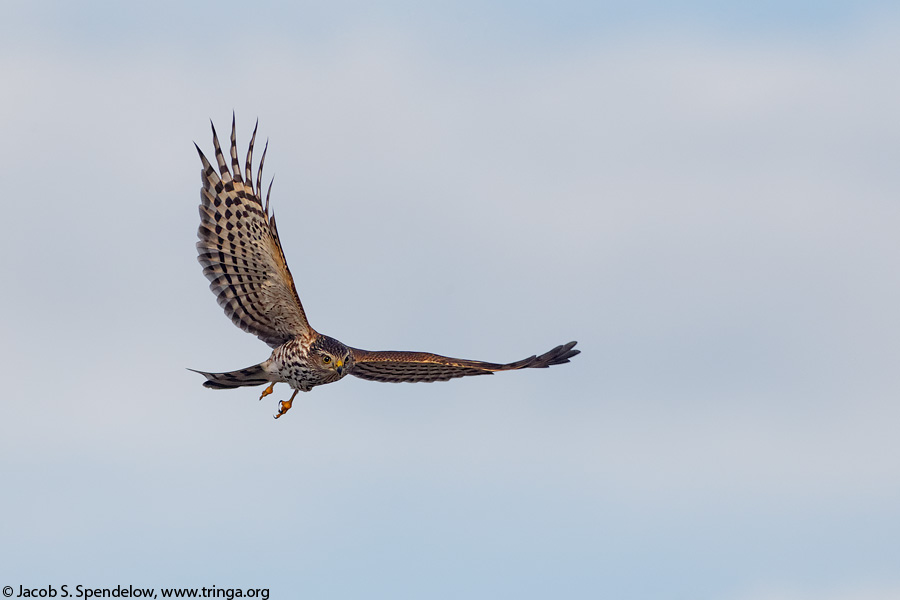
Immature Sharp-shinned Hawks migrate through Cape May in large numbers every fall.
The title of the second gallery, "Miscellaneous Photos, 2009-2012," pretty much sums it up - it's a collection of all the photos from 2009-2012 that should have been posted but weren't until now. For every good image I post, I have another ten or twenty that don't make the cut. Most of these aren't worth showing anyone, but occasionally a good image ends up in my reject folder by mistake. This weekend I finally found time to go through a few old folders to see what I'd missed the first time around, and came up with another 20 bird photos, some from as long ago as 2009. While I was at it, I also went through my scenic photos, which I have completely neglected for several years. Most of the scenic photos in this gallery are fall color and waterfall photos from 2012, but I found a few older photos from Alaska and West Virginia that I'd missed as well.
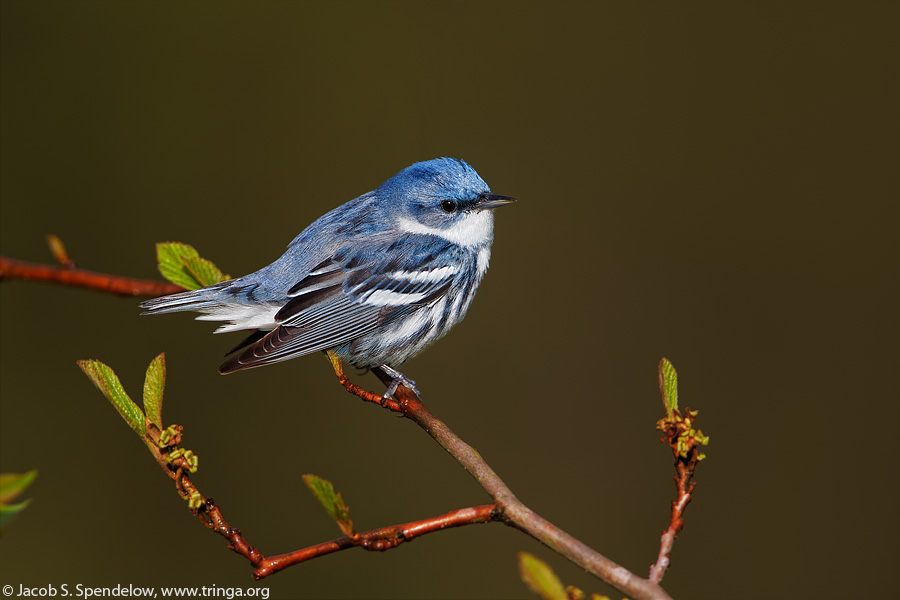
A Cerulean Warbler from 2011. I don't know why I passed over this image initially - it may be my favorite photo of this species (though this one and this one are also contenders).
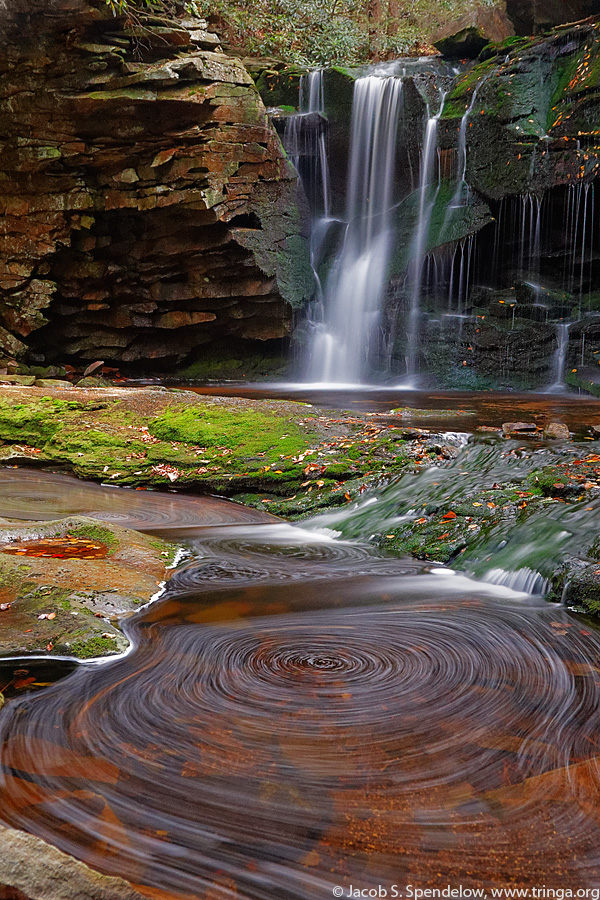
The first of the four Elakala Falls. I used a long exposure here to illustrate the looping eddy currents in the pool below the falls.
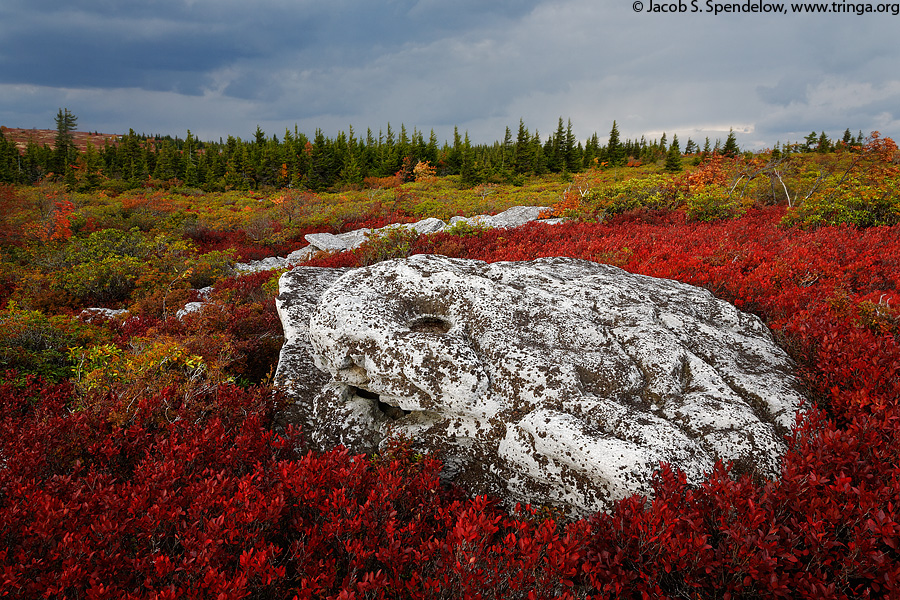
The huckleberries and other shrubs of the Dolly Sods have already reached peak color by late September. At 4,000 feet above sea level, fall comes early!
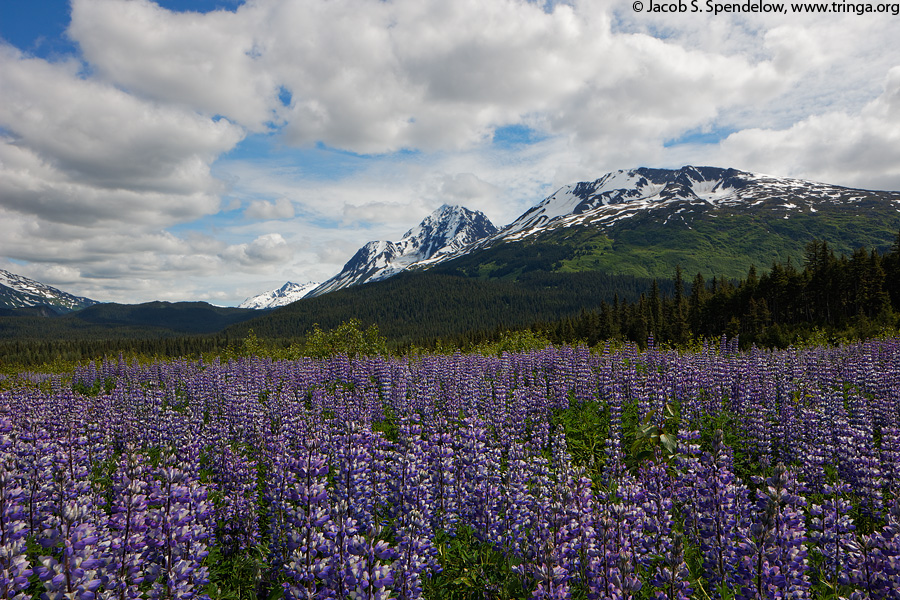
A field of Lupines on Alaska's Kenai Peninsula.
November 21, 2014 - Mid-Atlantic Spring
I've traveled extensively and seen many beautiful places in my life, but the temperate forests of the Eastern United States continue to be my favorite place to be in springtime. The forests are beautiful when the redbuds are blooming and the trees are leafing out, and the sights and sounds of all the migratory songbirds returning to their summer homes make April and May a thrilling time to be in the woods. I was absent from the eastern forests last spring, enjoying an awesome road trip through the Southwest, so I made sure to seize every opportunity to head out into the woods this spring. Since I'd already photographed most of the local species in previous years, I decided to take a more casual approach this time. I spent less time searching for target species and more time enjoying whatever species I happened to find. I also spent less time driving than in previous years, limiting my travels to a three hour radius from home. Despite this casual approach, or maybe because of it, this spring turned out to be very productive for my camera.
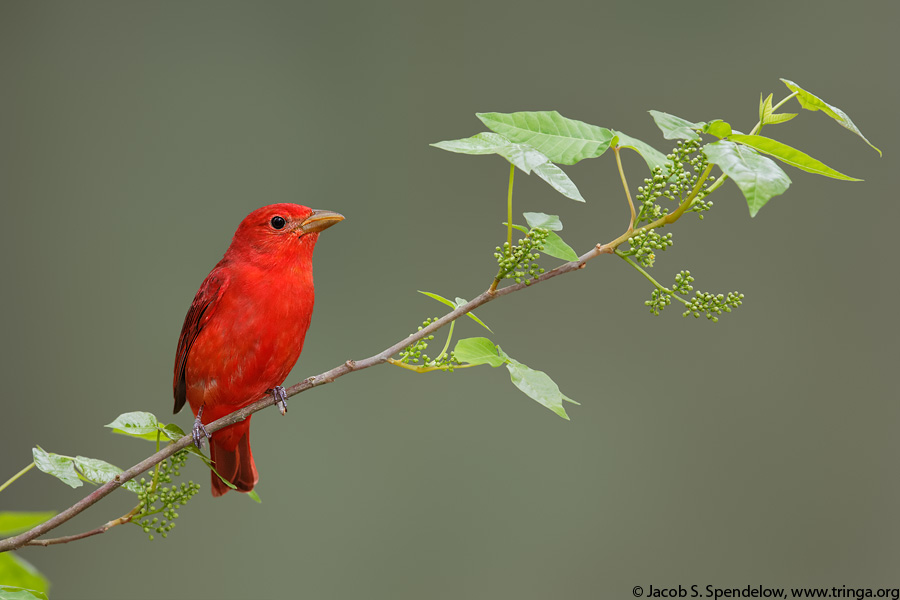
A Summer Tanager perched on a poison ivy branch.
Some migrant songbirds return to the mid-Atlantic in March, but the real action begins when the warblers start arriving in April. The breeding season seems to start a bit earlier on the Delmarva Peninsula, so that's where I went on my first weekend trip in mid April. The swampy forests of the Pocomoke River Watershed host a variety of breeding warblers, vireos, and other songbirds. On this trip I had some good photo opportunities with Blue-gray Gnatcatcher, Ovenbird, and others.
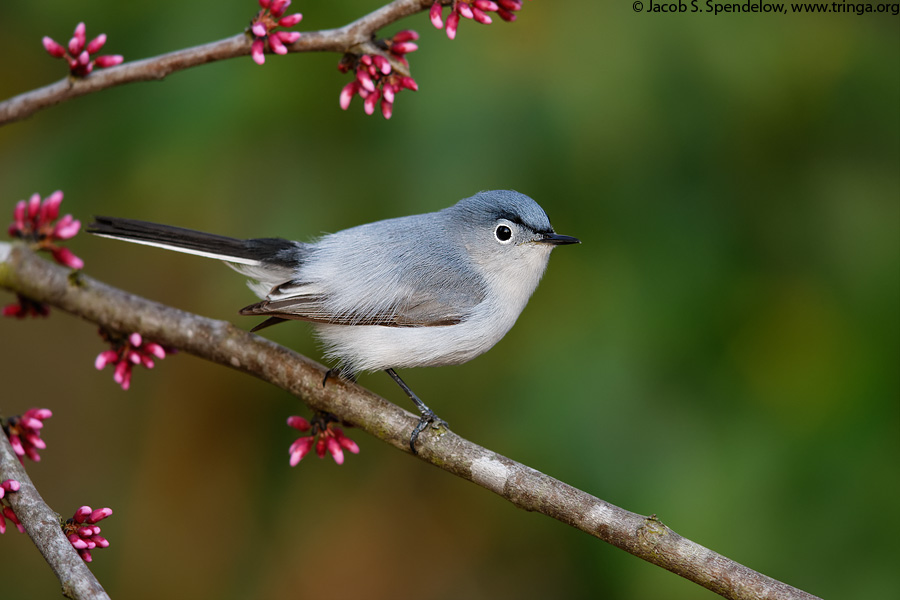
A Blue-gray Gnatcatcher on a redbud branch.
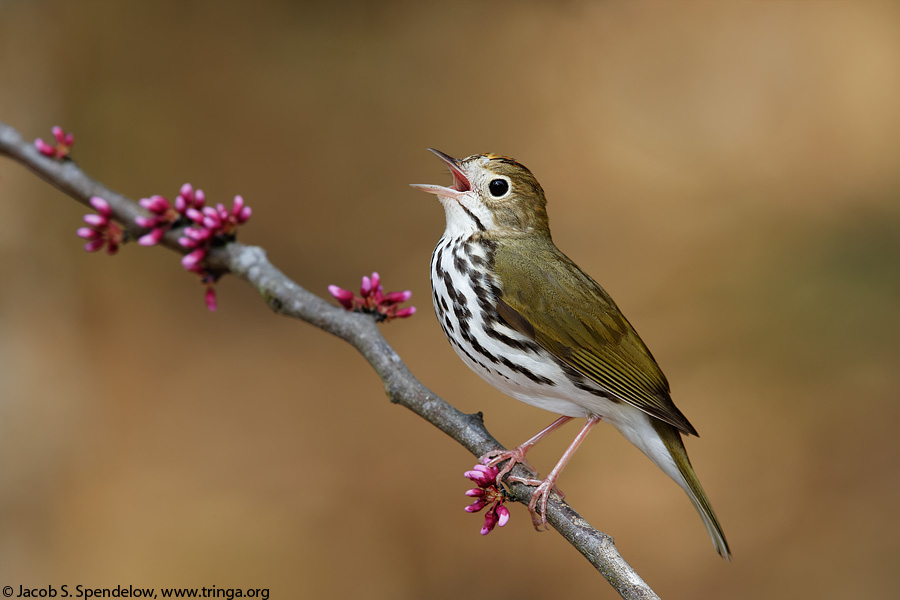
An Ovenbird sings from a redbud branch. During their brief blooming season in April I try to get as many photos of birds perched on these beautiful and distinctive branches as possible.
Next up was a trip to the sandy pine forests of Southern Virginia, an area that I hadn't explored before this spring. Prairie, Pine, and Hooded Warblers are joined by a diverse set of vireos, flycatchers, and other songbirds in these forests. Along with a variety of warblers, I was happy to finally get some photos of Brown-headed Nuthatch and Yellow-throated Vireo, two species that had given me trouble prior to this spring. Some of the breeding birds hadn't arrived yet in mid April, so I made another trip to this area in early May, getting nice photos of common species like Black-and-white Warbler and Red-eyed Vireo. I had a great time exploring these lovely pine forests, though one of my main targets in the area, the cryptic and nocturnal Chuck-will's-widow, eluded me. I heard one calling from somewhere deep in the forest, but a lengthy nocturnal bushwhacking session to try to get a photo, or even just a look, proved fruitless.
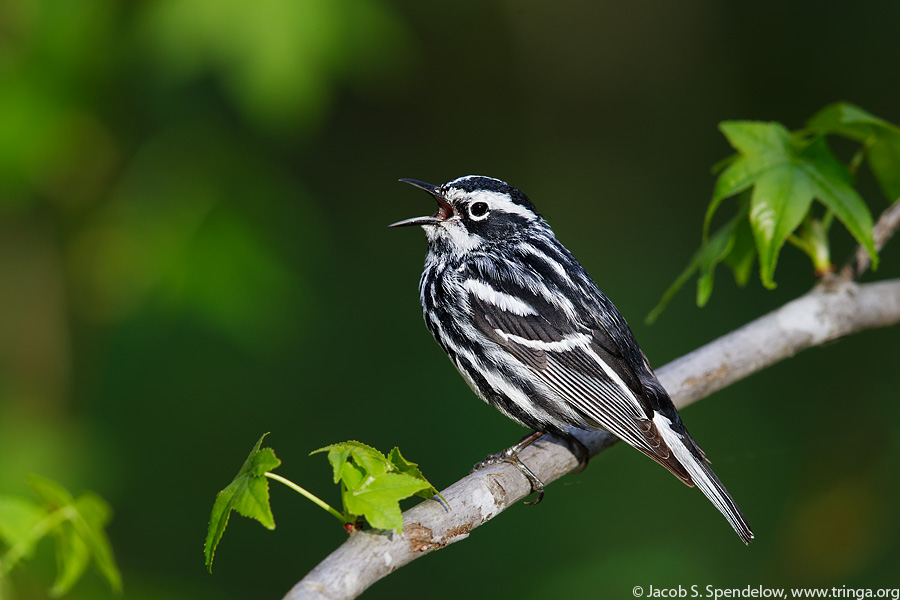
The Black-and-white Warbler is an atypical warbler, lacking the bold, vivid colors of most of its cousins, but the crisp contrast of its plumage makes it striking nonetheless.
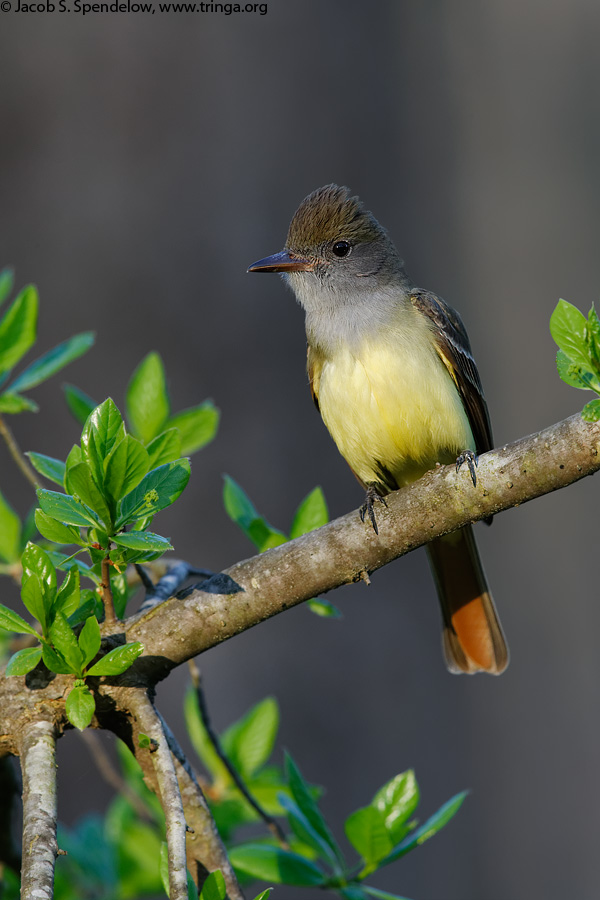
A Great-crested Flycatcher at sunset in a Southern Virginia forest.
Chuck-will's-widows were elusive, but I had plenty of opportunities to photograph the closely related Eastern Whip-poor-will this spring. Whip-poor-wills are widespread in the mid-Atlantic, occurring from the coastal plain up well into the mountains. I found large numbers of them (and got lots of photos) on the ridges along the West Virginia border. I also spent some time looking for diurnal birds on those ridges, but had surprisingly little success. Despite having extensive forest that looks appealing to me, breeding songbirds were few and far between.
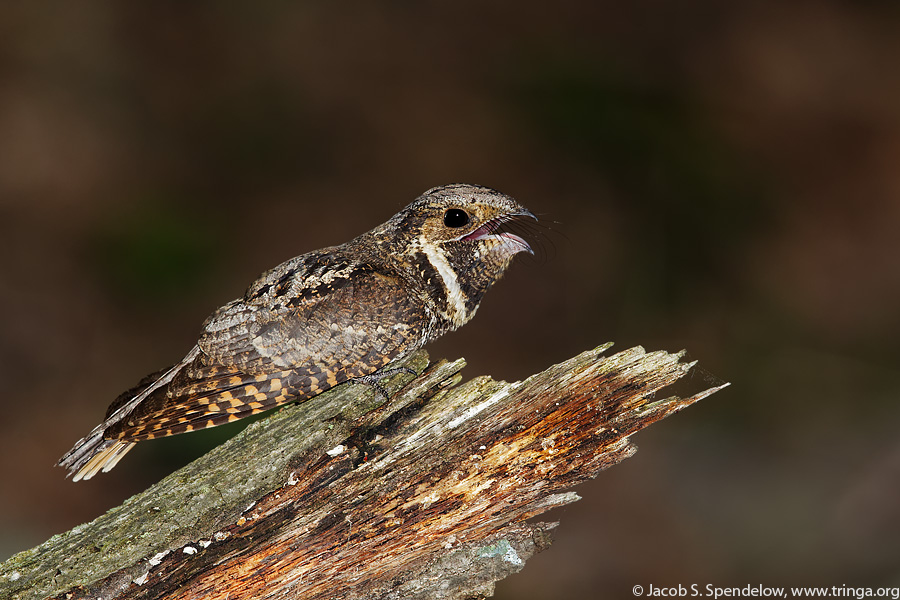
An Eastern Whip-poor-will gives its haunting song in the Ridge and Valley Province of West Virginia.
I headed back to the Delmarva Peninsula in late May, this time leaving the forests to spend a few mornings on the coast. Purple Martins proved easy to photograph coming and going from their busy colonies on the western side of the peninsula. I also spent time in the salt marshes on the the eastern side of the peninsula, where I finally tracked down and photographed one of my nemesis birds, the Saltmarsh Sparrow. While I was at it I also got photos of two other Ammodramus sparrows: Seaside Sparrow and Nelson's Sparrow. This was just a few days before my trip to the prairies, where I photographed Grasshopper, Baird's, and Le Conte's Sparrows, so in the span of a week I ended up photographing six of the seven North American Ammodramus sparrows. Kind of crazy considering that in my eight years of bird photography I'd only photographed five.
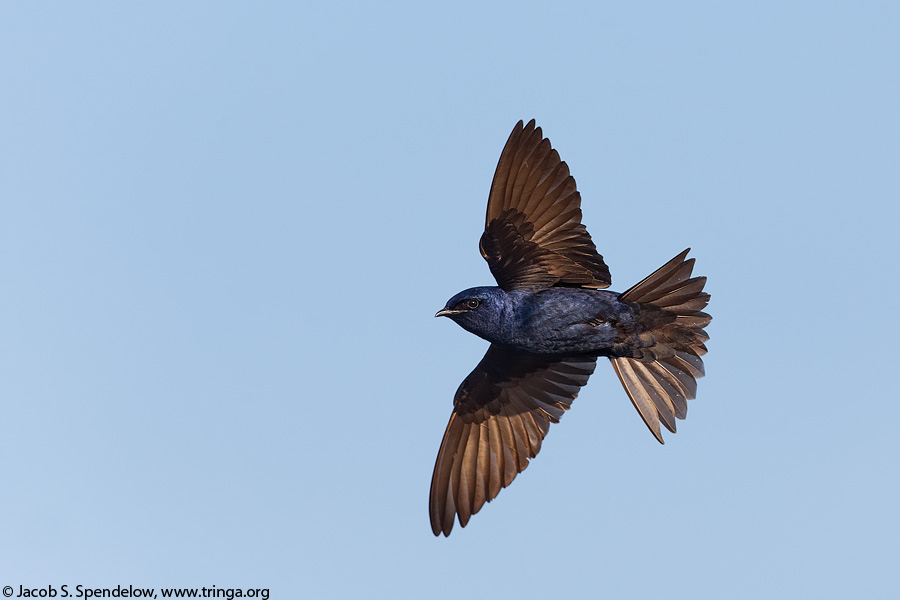
A Purple Martin, the largest species of swallow in North America.
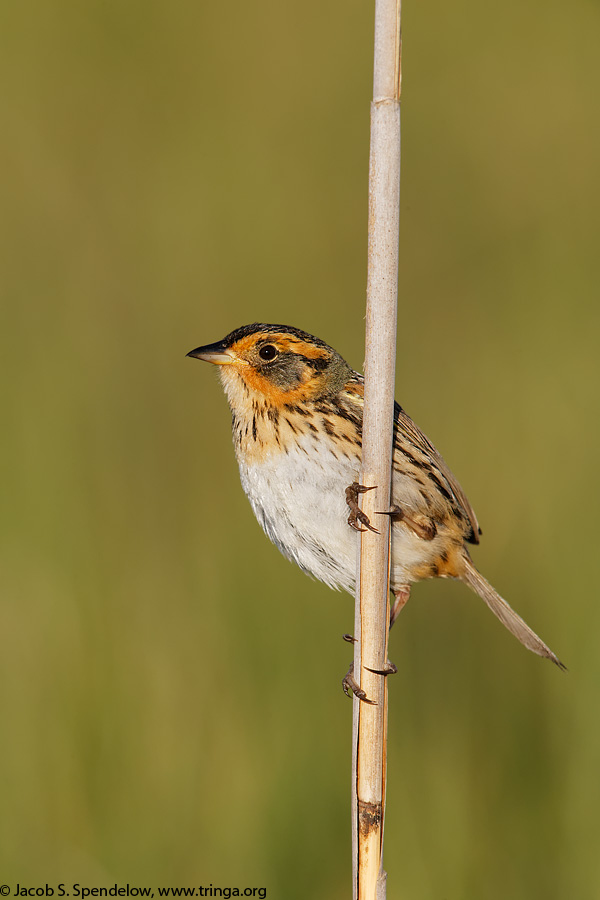
A Saltmarsh Sparrow on the shore of Chincoteague Bay. A glance at the tail of this unusual bird reveals why it was formerly known as the "Sharp-tailed Sparrow."
Spring is now just a distant memory, and most of the songbirds have long since left for their winter homes in Central and South America. More recently, I've been visiting hawk watch sites in marginally successful attempts to photograph migrant raptors. I've also made several unsuccessful attempts at photographing Northern Saw-whet Owls this fall. With thousands of those little owls migrating through the area in October and November, I feel like getting a good photo, or even a good look, should be doable, but it hasn't happened yet. Well, it's always good to have another challenge to work on.
October 11, 2014 - Coastal British Columbia
A business trip took me out to Vancouver, BC in September, and I stayed a couple days afterwards to kayak in the coastal waters near Vancouver and Victoria. The weather was murky and rainy for the most part, with only one nice evening and a few brief episodes of light overcast, but I did my best to get photos of the interesting marine wildlife of the region during the brief stretches of usable light, and simply enjoyed the kayaking the rest of the time.
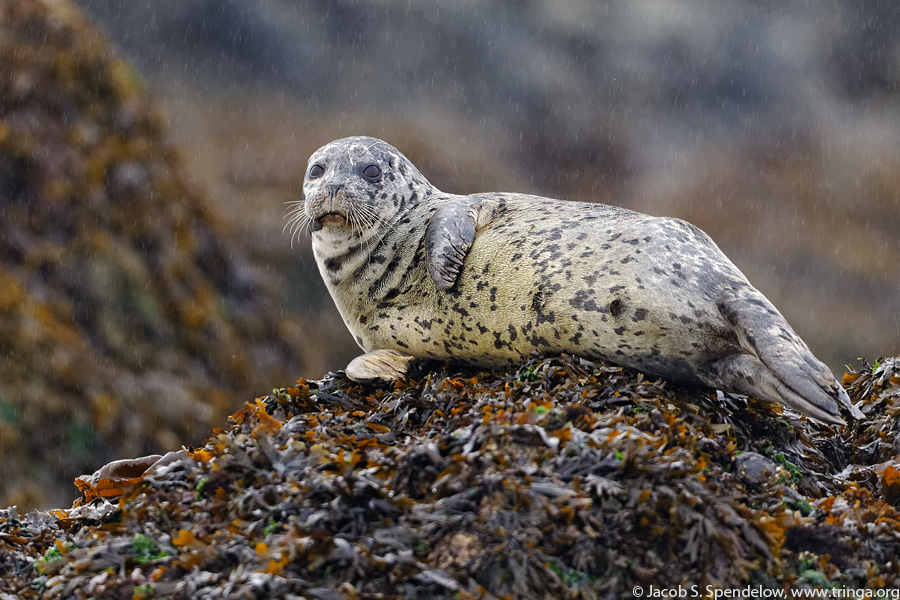
A Harbor Seal lounging in the rain.
Alcids were my main target on this trip, with at least four common species in the area and a few possible rarities as well. Photographing alcids from a kayak has to be about the most challenging form of bird photography there is, even worse than the pelagic shooting I did earlier in the month. Getting close to the birds without spooking them was hard, getting a nice pose was even harder since they were usually swimming away from me, and managing to keep an autofocus point on the bird and get a sharp photo while both of us bobbed in the waves was hardest of all. Between the technical challenges and the poor weather, I didn't get quite the set of images I had hoped for, but I did at least get usable photos of the four common alcids, along with a few other coastal species.
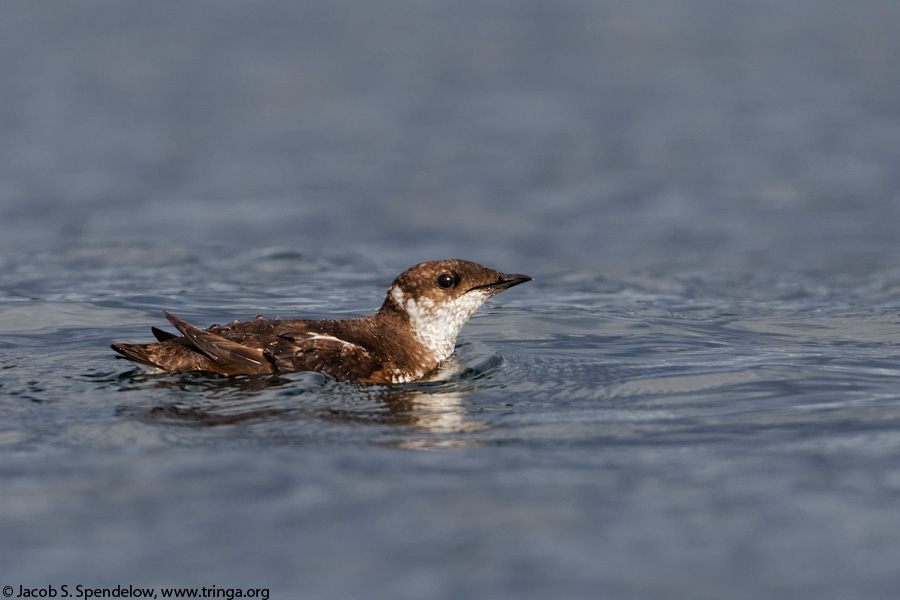
A Marbled Murrelet transitioning from breeding plumage to winter plumage.
October 6, 2014 - North Carolina Pelagic
I ventured out on three late summer pelagic trips off the coast of North Carolina with Brian Patteson this year, getting a great start on photographing the seabirds that can be found on the warm Gulf Stream waters just a few hours off the coast. Being out on the open ocean feels like being in a different world from the terrestrial habitats where I typically shoot, and the photography skills required are different as well. All the fieldcraft I use on land is irrelevant at sea. The only thing one can do on a pelagic trip is point a lens at any bird that happens to fly in close and count on the captain to get the boat in the right place. Fortunately, Brian has been running these trips for years and is an expert at finding pelagic species and getting close to them. With the help of two skilled guides, Kate Sutherland and Kyle Kittelberger, calling out incoming birds, I was able to get photos of all the common and seasonally expected seabirds in this area, including Black-capped Petrel and three species of shearwater. Along with the common seabirds, we had the excitement of seeing a very rare Bermuda Petrel as well, though my photos of it aren't good for much aside from documentation.
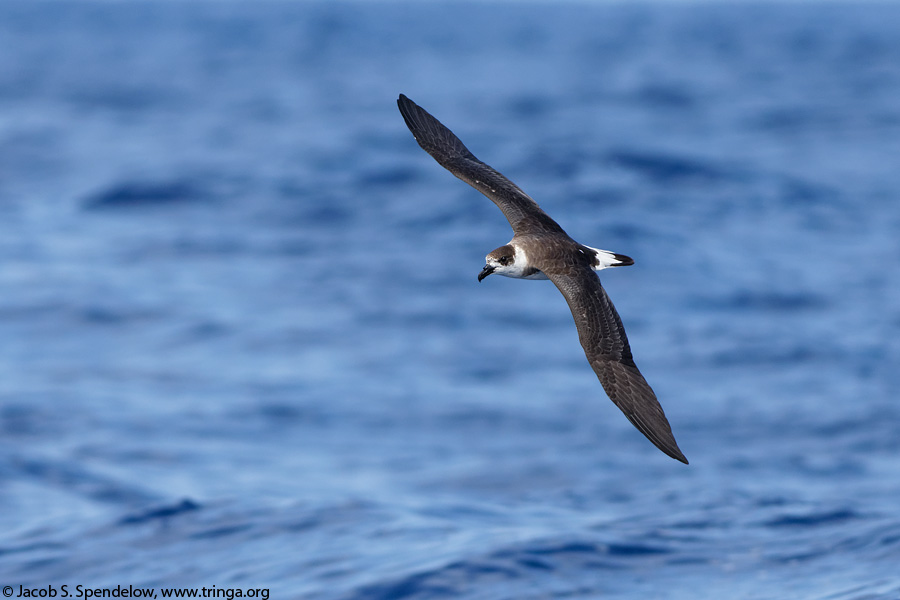
A Black-capped Petrel arcs over the Gulf Stream.
Pelagic trips don't make for easy bird photography. The birds often stay far out of range, with the rare close passes coming with little warning. Even when they do come in close, the rocking of the boat makes it difficult to keep an autofocus point on a bird. But the biggest problem is the light, which can be challenging, to put it mildly. It takes a few hours to get out to the productive Gulf Stream waters, so the photography doesn't even start until the sun is high enough that I would be packing up and heading home if shooting on land. But a little patience and a lot of luck can still yield some decent recents, and there's no denying the thrill of getting a good photo under these challenging circumstances.
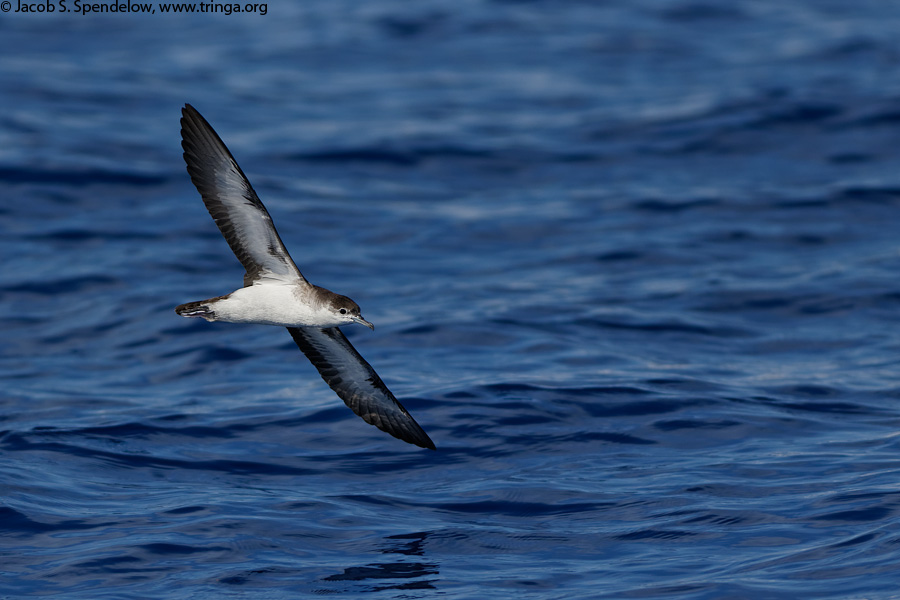
Audubon's Shearwaters glide low above the surface of the water in search of small fish, squid, and other prey.
September 25, 2014 - Prairie Potholes
A trip to the prairie potholes region of North Dakota has been on my wish list ever since I got started in bird photography, but it wasn't till this year that I finally made it happen. I only had a few vacation days to spare, but I really, really wanted to get a start on prairie bird photography, so I decided to take a long weekend trip. A canceled flight caused my trip to become even shorter than planned, leaving me with only four mornings and four evenings for photography, half of which ended up getting rained out. The trip was short and the weather was bad, but I made the most of my time, and ended up getting photos of all my target species aside from Yellow Rail (which wasn't a likely species to get in any case).
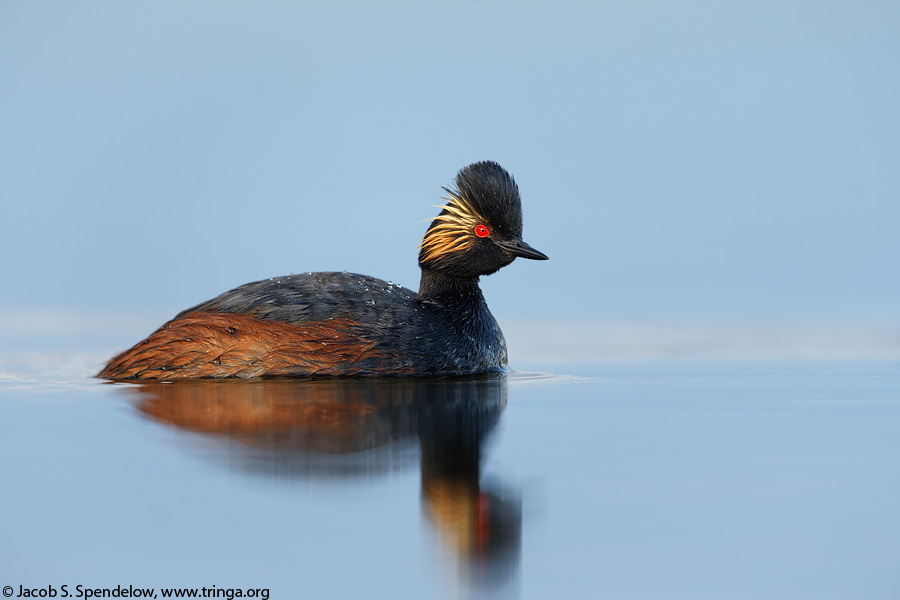
Eared Grebes are a common breeding species in the prairie potholes of North Dakota and Montana.
After arriving a day later than planned in the oil boom town of Minot, I started out exploring the National Wildlife Refuges of the Souris Loop, and though the 30 mph winds kept most of the birds down, I nevertheless was able to get some usable photos of a Clay-colored Sparrow struggling to keep from being blown off his perch. The next morning dawned with much better weather, and I was able to get a few photos of the ducks and grebes that breed in such astonishing numbers in the potholes. A displaying American Bittern and a singing Sedge Wren capped a great first morning.
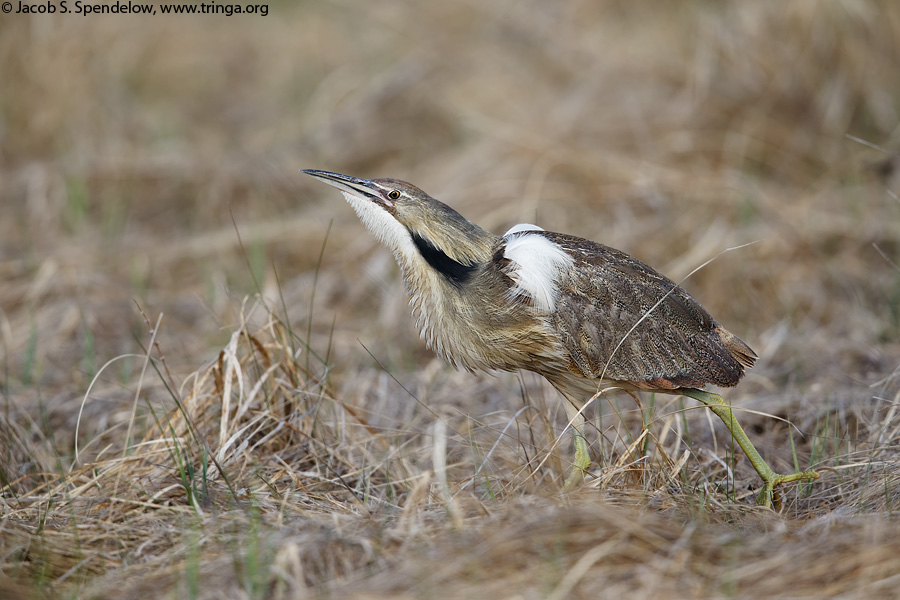
Despite being rather unremarkable in appearance, the American Bittern has a bizarre and distinctive call, sounding something like a mechanical water pump. Though the bird is well-camouflaged and hard to spot, the call can be heard for great distances across the prairie.
I next headed west to Montana, where I spent a few days photographing a wide variety of prairie specialties. Things got off to a great start, with a confiding Chestnut-collared Longspur singing in the sweetest evening light, and some nice encounters with a Grasshopper Sparrow, Western Meadowlark, and Bobolink the next morning. The weather soon soured, though, and that evening and most of the next morning were completely rained out. Once the rain passed I was left with some light clouds that created nice soft light at mid-day. I was already running out of time on my trip, with a flight to catch the next day, but I hurriedly got as many photos as I could before starting my drive back to North Dakota in the early afternoon. Short though my window of opportunity was, it was extremely productive, with two of my most wanted species, Sprague's Pipit and Le Conte's Sparrow, both giving incredible photo ops in the space of an hour.
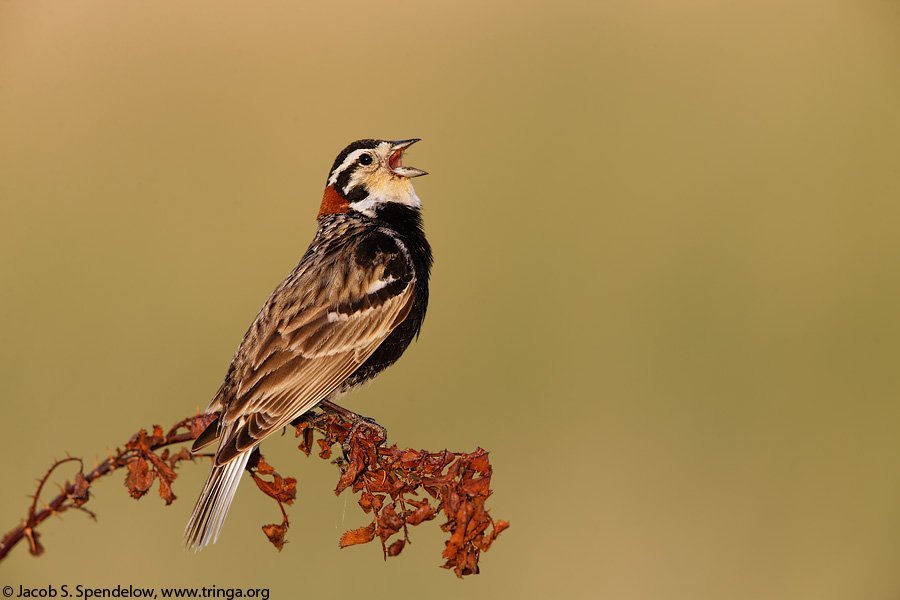
Chestnut-collared Longspur was my biggest miss on my trip to the Pawnee Grasslands last year, so it was extra sweet to find an extremely photogenic individual in beautiful light on this trip.
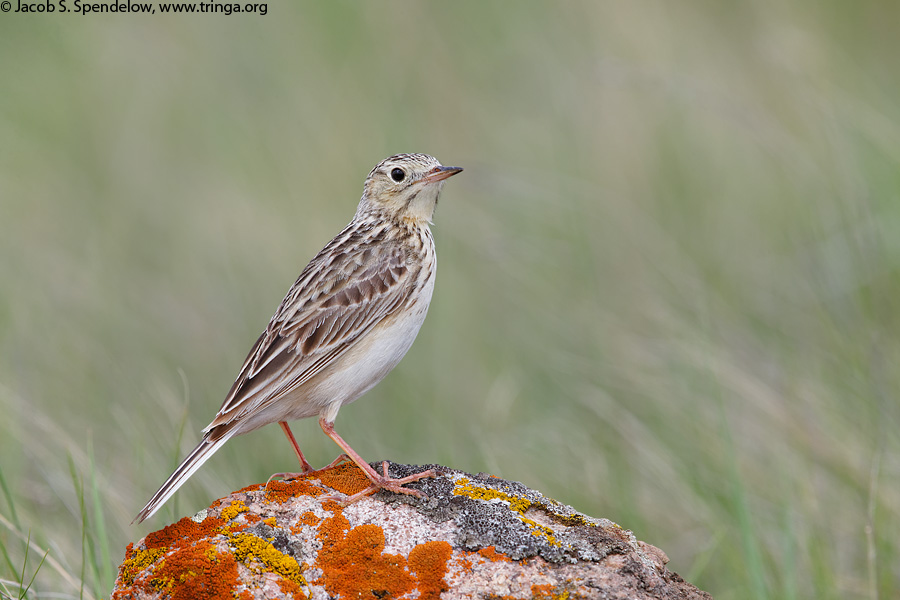
Sprague's Pipit is one of the quintessential prairie specialties, often encountered singing from hundreds of feet up in the sky in a remarkably persistent song flight that can go on for hours.
My last evening and morning were again virtual washouts, with continuous drizzle and weak, murky light. I got a few mediocre photos of Franklin's Gull, Ruddy Duck, and Sedge Wren on the Souris Loop on my last morning, then headed back to Minot for my flight home. The trip was over way too soon, with the canceled flight and bad weather having severely limited my productive photography hours, but I was still happy with how things turned out. I hope to take a longer trip to the prairies before too many more years go by, but the photos I got on this trip should tide me over till then.
I try to photograph as many bird species as I can, and always enjoy "completing the set" by photographing all the members of a given family of birds. This trip was a great one in that respect, as I finished filling in all the sparrows (with Le Conte's Sparrow), wrens (with Sedge Wren), and icterids (with Yellow-headed Blackbird) that typically occur in North America. I don't expect to ever finish filling in all the missing spaces in my portfolio, but I sure enjoy trying!
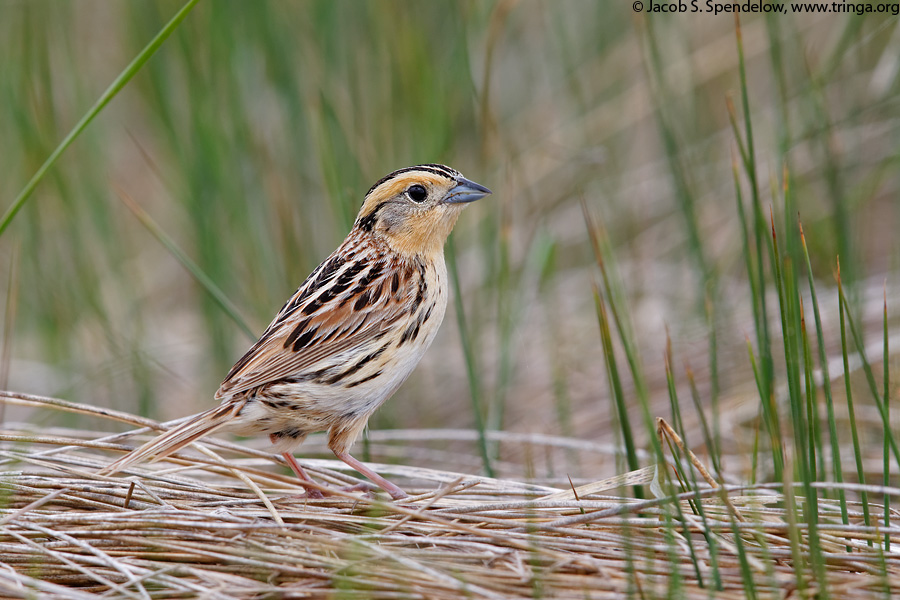
The Ammodramus sparrows are notorious for their skulking habits, and Le Conte's Sparrow is the worst of the bunch. Seeming like more of a mouse than a bird, it prefers to scurry through the marshy grasslands rather than take flight, frequently disappearing under layers of matted vegetation only to pop up again several feet away. This sparrow even sings from deep in cover. I followed this individual around persistently until I got a few shots of him out in the open.
August 19, 2014 - Florida
For the first time since 2009, I did not go on any major photo trips this spring, so I won't have any huge new galleries to post. Nevertheless, I enjoyed a reasonably productive breeding season, with plenty of local weekend shooting as well as brief trips to Florida and North Dakota, which together yielded a few hundred photos, including close to thirty new bird species. The first batch of photos, from a long weekend in Florida, are now posted. Three very productive trips in fall 2011 and winter 2012 enabled me to photograph most of the common birds of Florida, but this was my first trip to Florida in the breeding season. Although Florida is mostly known as a bird photo location for its ridiculously unwary waders, shorebirds, and waterfowl, I ignored all these "easy" species on this trip to focus on the hard ones - the breeding specialties of Southern Florida. Southern Florida hosts a number of primarily Caribbean species that can't be found anywhere else in the US, including sought-after birds like Black-whiskered Vireo and Mangrove Cuckoo. It also hosts many established exotic species, including a long-standing population of White-winged Parakeets and a very new population of Purple Swamphens that was only added to the ABA checklist last year. I much prefer photographing native birds, but I don't turn up my nose at photographing exotics - despite the hatred they provoke in many birders, I can't really blame the birds for being here, seeing as how most were introduced by humans. Birds like the Purple Swamphen are here to stay - the state of Florida abandoned its highly unsuccessful program aimed at eradicating them in 2008 - so we may as well get used to them.
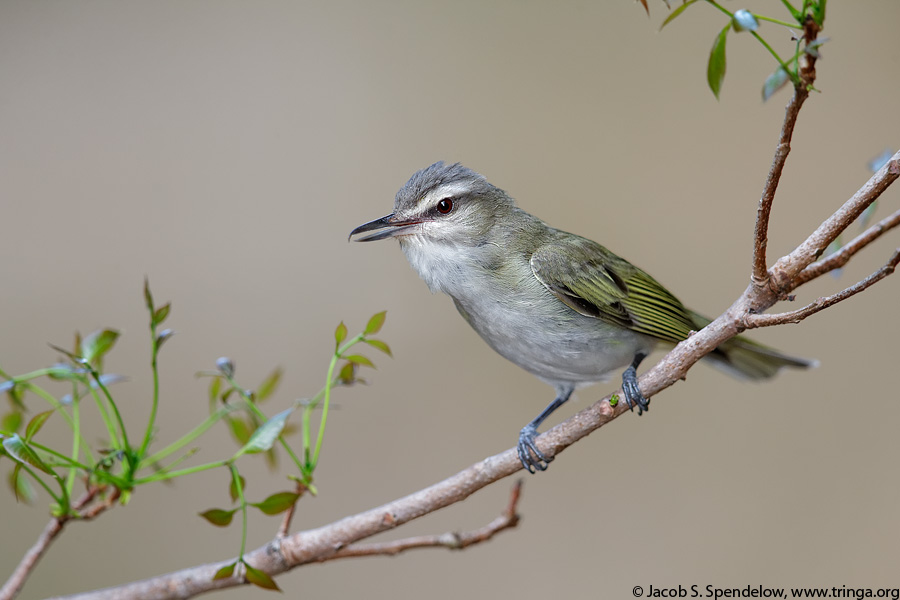
The Black-whiskered Vireo is essentially the Caribbean counterpart to the Red-eyed Vireo.
Since I mostly ignored the easy species and focused on photographing the more difficult Florida specialties, this trip produced fewer good photos than my previous Florida trips, but I was happy to add some of the quintessential Southern Florida specialties like Black-whiskered Vireo and Gray Kingbird to my catalog. Help from expert nature photographer Judd Patterson was instrumental in getting many of these photos, though even Judd's extensive local knowledge couldn't guarantee everything - we spent two mornings and an evening at a spot where Judd had photographed a Mangrove Cuckoo just a few days prior, but despite exhaustive searching, I never so much as saw a cuckoo. Finding a roosting Common Nighthawk while searching was a nice consolation, though.
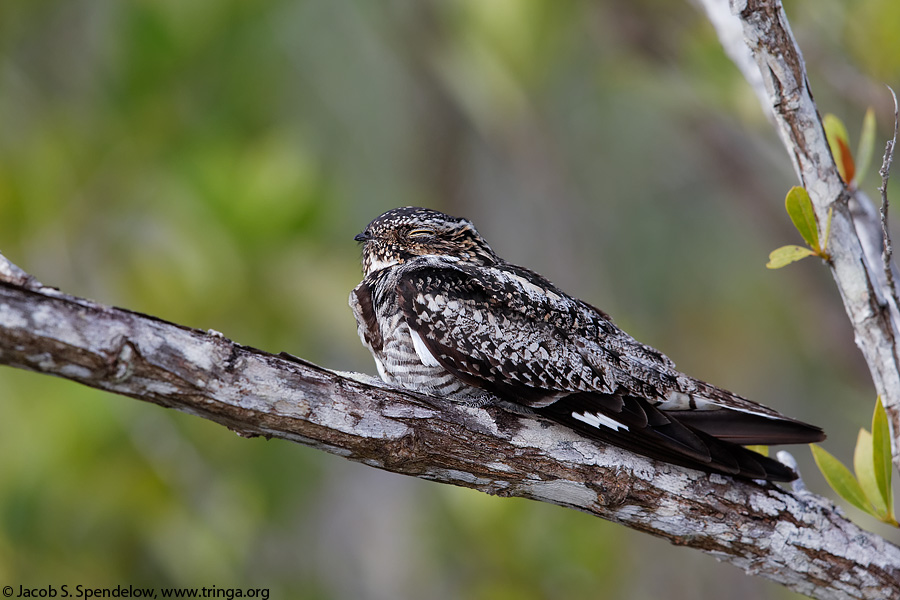
Though not at all a Florida specialty - unlike Antillean Nighthawk, which I sadly missed - I was thrilled to find this Common Nighthawk roosting on an exposed branch.
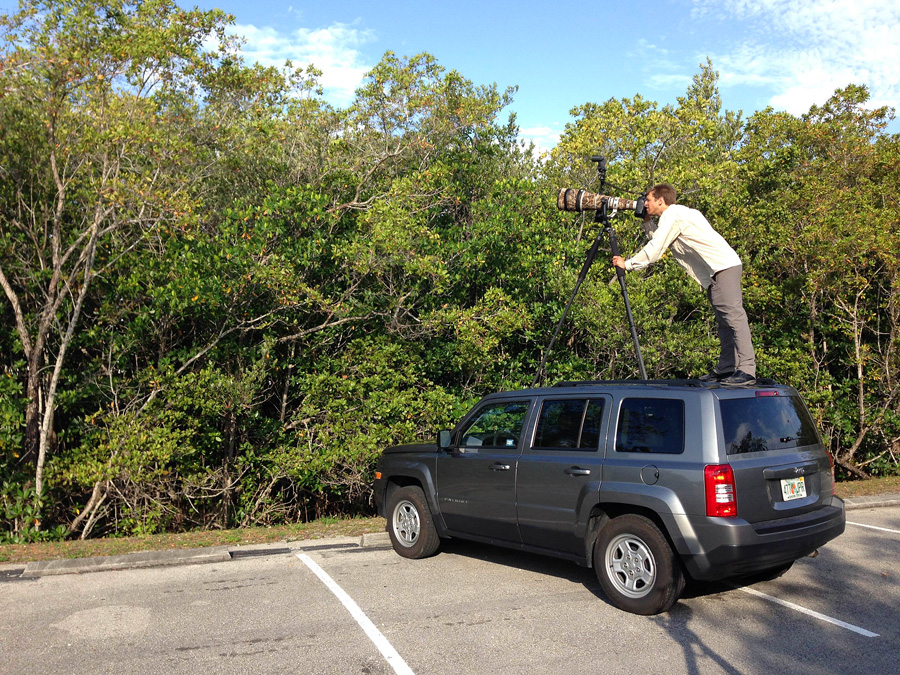
Concentrating very hard on photographing a Common Nighthawk without falling or putting a dent in the roof of my rental car. Photo courtesy of Judd Patterson.
March 9, 2014 - Costa Rica
Images from a birding trip to Costa Rica in January are now posted. Costa Rica is an ecotourist's paradise, with a multitude of easily accessible habitats, abundant and diverse native wildlife, gorgeous scenery, and well-developed infrastructure. The highly developed tourist industry, political stability, low crime rates, drinkable water, and low prevalence of tropical diseases make it an easy and safe tropical destination for birders and other nature lovers. I spent a week touring Costa Rica with my family in January, visiting a variety of the best birding areas from the lowland rainforests near La Selva OTS to the alpine paramo of Cerro de la Muerte. It was more of a family/birding trip than a photo trip, but I did bring a skeleton set of photo gear and ended up with a decent starter set of Costa Rica nature photos.
Costa Rica offers a wide variety of charismatic wildlife, including several species of monkey, iguanas and other lizards, and poison dart frogs. Not having traveled much in the tropics before, most of this wildlife was completely new to me. Listening to Howler Monkeys and watching a troop of White-headed Capuchins crash through the jungle canopy were clear highlights of the trip. On a smaller scale, the brightly colored poison dart frogs were particularly intriguing. Sadly, I didn't have time or the right equipment on this trip to photograph the frogs, so that will have to wait for another trip.
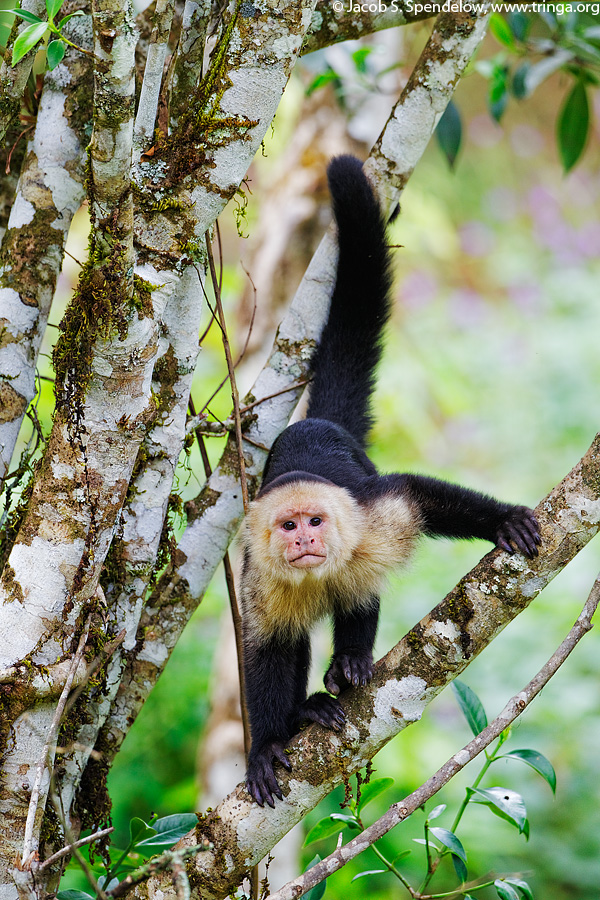
Like many other New World monkeys (but not the Old World monkeys), the White-headed Capuchin has a prehensile tail, which it uses much as a fifth limb.
The biggest attraction for me was, of course, the birds. Costa Rica is slightly smaller than West Virginia, yet has a bird list longer than that of the United States and Canada combined. Many North American breeding birds spend the winter in Costa Rica, adding to the diversity, but the real draw is the large number of truly tropical species, including a variety of toucans, parrots, tanagers, and others.
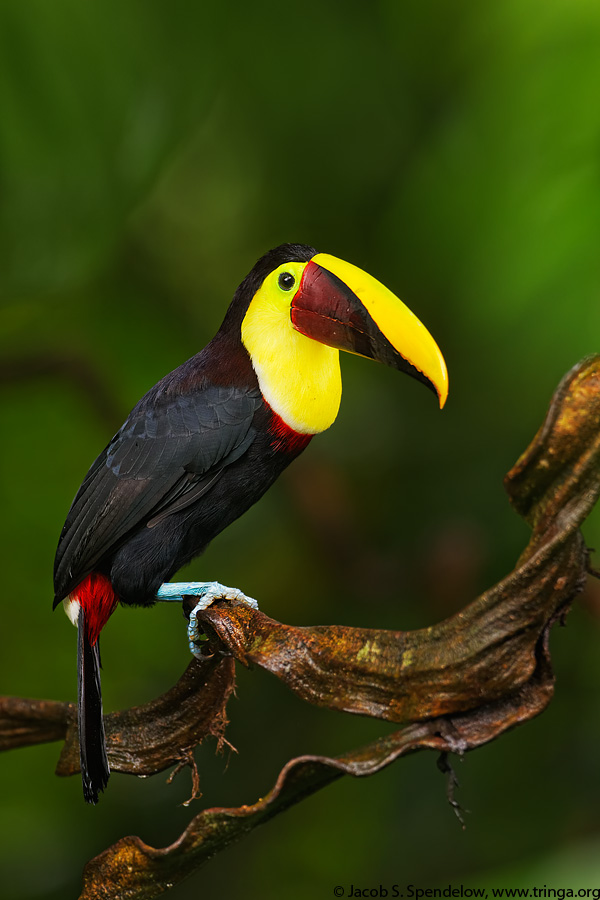
A Yellow-throated Toucan in lowland rainforest near La Selva OTS. This species was until recently known as the Chestnut-mandibled Toucan, but in 2011 the AOU determined that it is actually the same species as the Black-mandibled Toucan of South America.
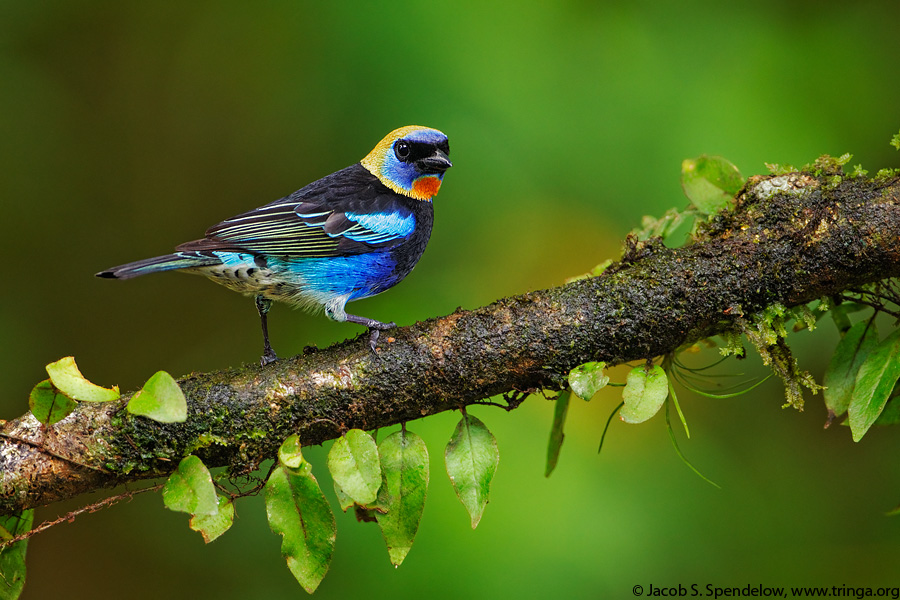
The tanager family (family thraupidae) is one of the most diverse bird families in the neotropics, and one of the most popular among birders. Most tanager species are a riot of color, as exemplified by this Golden-hooded Tanager.
Considering that the country has an official checklist comprising 857 bird species, I didn't expect to do more than scratch the surface on this trip, and I'm generally pleased with how things turned out. It was fun to add a lot of new species to my files (52 new birds), something that has become increasingly difficult to do in the ABA area, where I've already photographed most of the low-hanging fruit. The ABA area birds that I grew up with are certainly closest to my heart, but having spent much of the last 8 years building up my portfolio in the US and Canada, I'm looking forward to branching out and doing more world bird photography in the future.